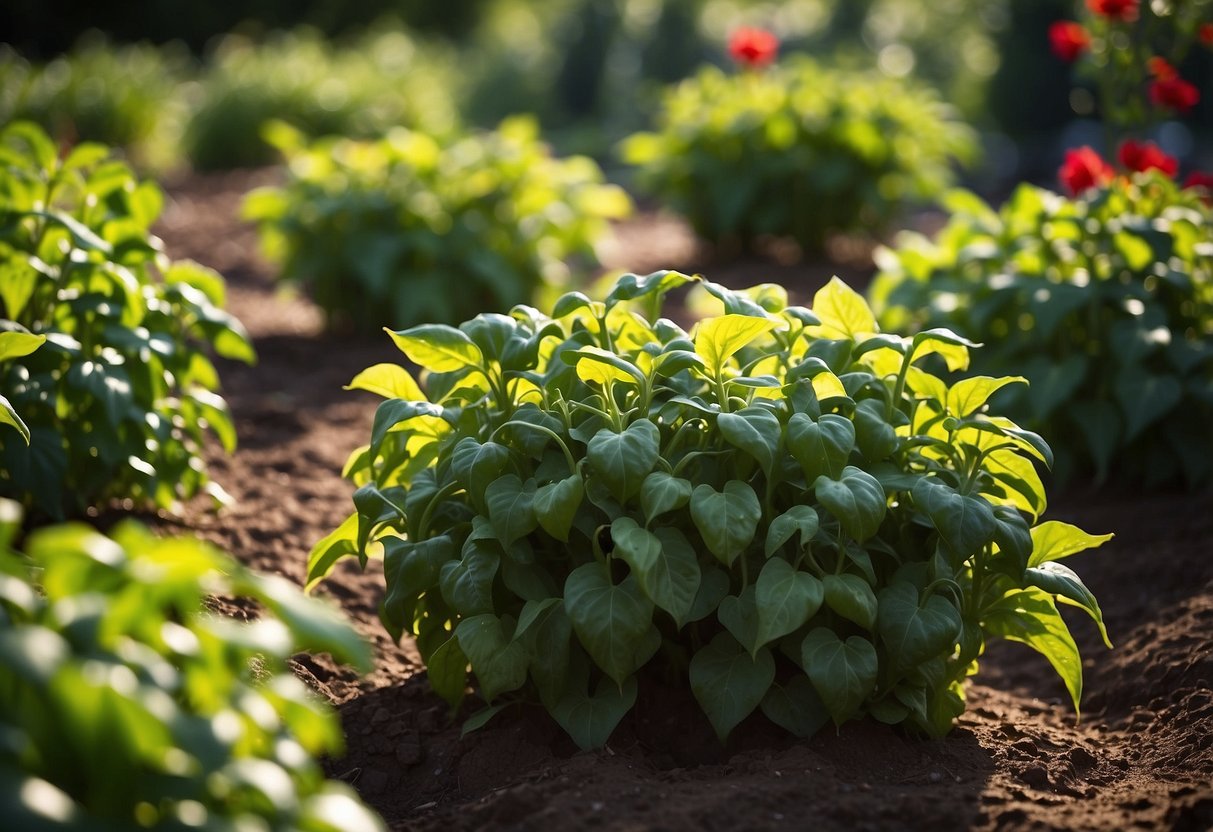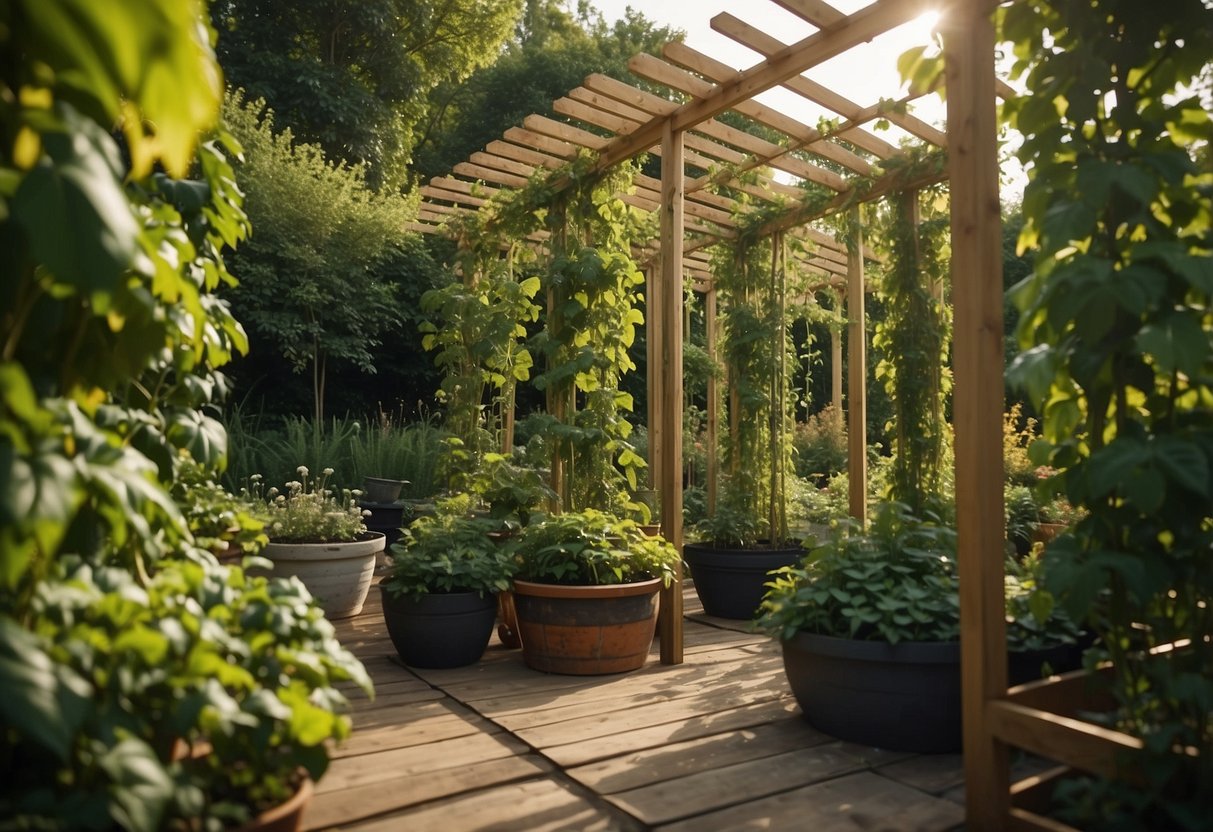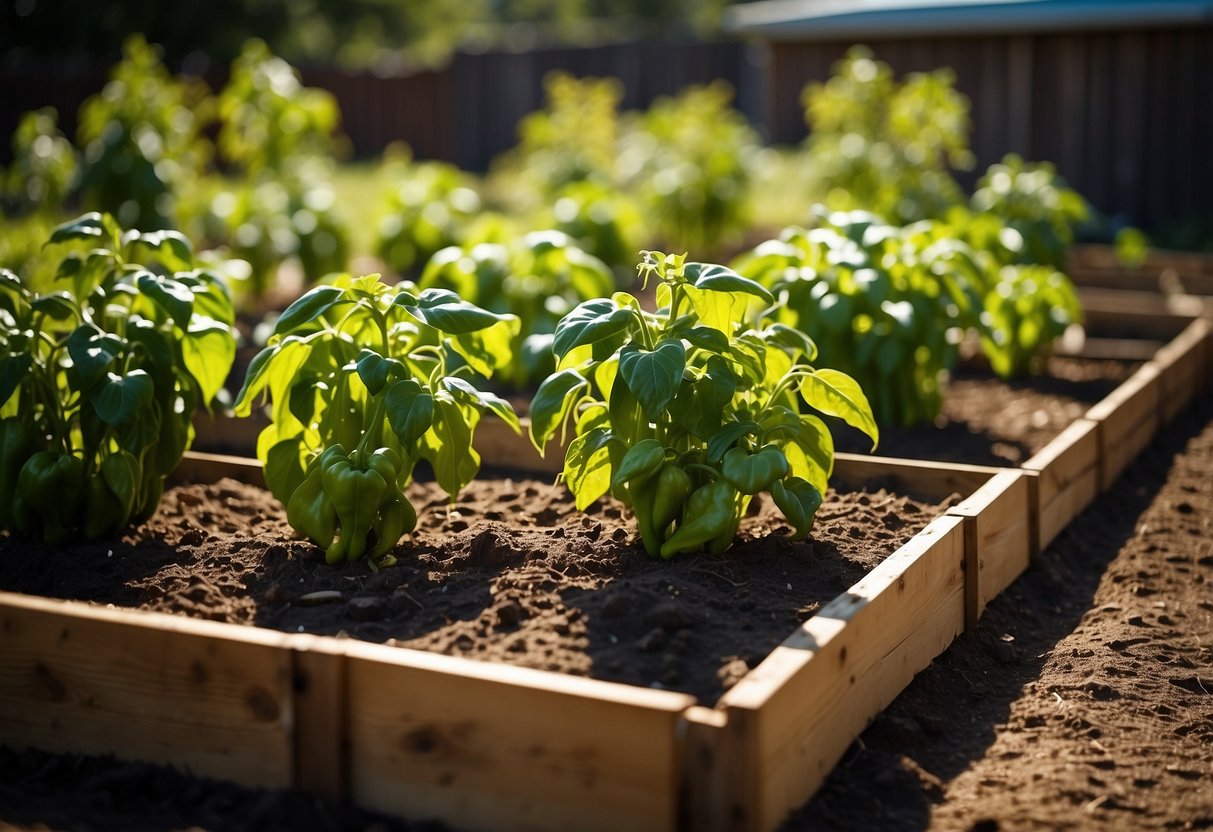Pepper Garden Ideas: Tips for Lush and Productive Harvests
Planning a pepper garden can be a fun and rewarding activity. Whether you have a small backyard or a spacious garden, growing peppers adds color and flavor to your meals. Discover how simple it is to incorporate a variety of peppers and create a thriving garden.

You don’t need to be an expert to get started. With the right tips and guidance, you can enjoy a bountiful harvest. Peppers are resilient and come in many shapes and sizes, giving you plenty of options for your garden space.
1) Raised Bed Designing

When designing a raised bed for your peppers, start by choosing a sunny spot. Peppers need at least six hours of sunlight daily.
Consider the size of your raised bed. Arrange your pepper plants 10 to 15 inches apart, and ensure rows are two feet apart for easy maintenance.
Using cedar boards can help in building durable and visually appealing beds. Raised beds also improve soil drainage and keep your plants healthy.
2) Companion Planting Ideas

Using companion plants in your pepper garden can improve growth and pest control.
Plants like cilantro attract beneficial insects while repelling pests. Cilantro is low-growing and won’t compete for space.
Sunflowers make a beautiful addition and help control pests. They also boost the health and yield of your peppers.
Consider garlic for its natural antiseptic properties and pest deterrence. Garlic takes up little space and protects against common garden pests.
Corn can provide shade and shelter, creating a better growing environment for your peppers.
3) Self-Watering Planters

Self-watering planters are a great way to keep your pepper plants hydrated with less effort. These planters have a reservoir at the bottom that holds water. The soil absorbs the water as needed.
You can make a simple one using a plastic bottle. Cut it in half and place the top into the bottom filled with water. This method is both easy and effective for keeping your plants happy. For more in-depth guides, check out these DIY Self-Watering Planter Instructions.
4) Vertical Gardening Techniques

Vertical gardening is a great way to grow peppers, especially if you have limited space. You can use trellises, which provide strong support for climbing pepper plants.
Wall-mounted planters are also a fantastic option. They allow you to make use of vertical space by hanging pots filled with peppers.
A living wall can be both beautiful and functional. Secure a trellis panel to a wall and place potted pepper plants on it. This setup not only saves ground space but also adds a decorative touch to your garden.
5) Homemade Organic Fertilizers

You can boost your pepper plants with homemade organic fertilizers.
One simple method is using Epsom salt. Mix two tablespoons of Epsom salt in a gallon of water and mist your plants monthly for a magnesium boost.
Another option is manure tea. Mix well-aged cow, horse, or poultry manure with water to create a strong liquid fertilizer. This can be great for peppers.
Consider using an oatmeal mixture. Blend oatmeal with water, add a tablespoon of sugar, and let it ferment for a few days. Dilute with water before use. This mixture can provide nutrients to your pepper seedlings.
6) DIY Trellis Structures

Trellis structures can help your pepper plants grow taller and healthier. They are easy to build and can be made from materials you already have at home.
You can create a simple trellis using bamboo stakes and garden twine. This structure is perfect for supporting your pepper plants.
For a more decorative option, consider using wooden slats. These can be arranged in different patterns to add a touch of style to your garden.
If you prefer something more sturdy, try building a trellis using wire or metal fencing. This type of trellis is durable and can support heavier plants.
7) Drip Irrigation Systems

A drip irrigation system is perfect for your pepper garden. It delivers water directly to the roots, which saves water and keeps your plants healthy.
You can set up a manual shutoff valve in areas that tend to get too wet. This can be especially useful for controlling the water flow.
For easy scheduling, connect your drip system to a hose-end timer. This way you can automate watering and have one less thing to worry about in your garden.
Try making a DIY drip system with simple materials like milk jugs. Poke holes in the jug, place it next to your plants, and it will slowly release water to the roots.
Drip irrigation is an efficient way to keep your pepper plants hydrated and thriving! Learn more about installing one from Family Handyman.
8) Seed Starting Tips

You should start your pepper seeds indoors about 8 to 10 weeks before the last frost. This gives them a head start and ensures they are sturdy when it’s time to transplant outdoors.
Plant the seeds 1/8-1/4 inch deep. Make sure to use a high-quality, well-draining seed-starting mix.
Keep the soil moist but not waterlogged. Use a spray bottle to lightly mist the soil.
Place the seed trays in a warm location, ideally around 70-85°F. Covering them with plastic wrap can help maintain humidity.
Happy planting!
9) Pests and Disease Management

Keeping your pepper garden healthy means dealing with pests and diseases quickly. Flea beetles are common pests that chew small holes in leaves, making them look like Swiss cheese. Young plants are especially at risk from these beetles.
Whiteflies are another pest to watch out for. They weaken pepper plants by feeding on sap, causing leaves to turn yellow and wilt. You can control them by increasing humidity around your plants and using neem oil or insecticidal soap whiteflies.
10) Harvesting and Storage Tips

You can start harvesting your peppers once they are fully grown. The more you pick, the more the plant will produce. Snip the pepper off with clean scissors, leaving a bit of the stem attached.
After harvesting, place your peppers in a cool spot. Peppers will keep for up to two weeks at around 55°F (13°C).
For longer storage, consider freezing them. Wash, slice, and remove seeds and stems. Blanch in boiling water for two minutes, cool in ice water, dry, and then place in a freezer bag.
Benefits of Growing Peppers

Growing peppers in your garden offers several benefits, including a boost to your diet with essential nutrients and diverse, flavorful dishes. They are easy to grow and can be used in many ways.
Nutritional Advantages
Peppers are packed with vitamins and minerals that are great for your health. They are a rich source of vitamin C, which is important for your immune system. Bell peppers provide more vitamin C than oranges! They also contain vitamin A and beta-carotene, both of which contribute to good vision and skin health.
If you are looking for fiber, peppers can help. They aid digestion and keep you feeling full longer. Additionally, peppers have antioxidants that help fight diseases and reduce inflammation.
Hot peppers, such as jalapeños, contain capsaicin, which can boost your metabolism and help with weight loss. This compound also has pain-relieving properties. Including a variety of peppers in your diet can contribute to your overall wellness.
Culinary Uses
Peppers are incredibly versatile in the kitchen. You can use them fresh in salads, adding both color and crunch. They are also delicious when stuffed with rice, meat, or other fillings. Grilled or roasted peppers bring out a rich, smoky flavor that enhances many dishes.
Hot peppers add heat and spice to your meals. They are great for making salsas, hot sauces, and seasoning dishes from around the world. Bell peppers come in many colors and can be used in stir-fries, soups, and stews. They also make a tasty addition to sandwiches and wraps.
Drying peppers is another great way to preserve them. You can create homemade chili powder or smoked paprika, adding unique flavors to your spice rack. Growing your own peppers ensures that you always have fresh, organic produce at your fingertips.
Planning Your Pepper Garden

To have a thriving pepper garden, focus on choosing the right pepper varieties and planning an ideal garden layout. This ensures a healthy, productive garden with lots of tasty peppers.
Selecting Pepper Varieties
First, decide which types of peppers you want to grow. Peppers come in many varieties, such as sweet bell peppers, spicy jalapeños, and smoky poblanos.
Consider your climate and growing season. Some peppers, like bell peppers, need longer warm periods to mature. Check the specific growing requirements of each variety.
You can also mix sweet and hot peppers in your garden for variety. This way, you can use them in different dishes, from salads to spicy sauces. Think about your space too; some peppers grow more compactly than others, making them suitable for smaller gardens or containers.
Ideal Garden Layout
Spacing is crucial for a productive pepper garden. Most pepper plants need about 24 inches between them to grow well. This allows each plant enough room for airflow and sunlight.
Consider using raised beds or garden trellises. Raised beds warm up faster in the spring, helping peppers grow. Trellises support the plants, especially taller or heavier varieties, and keep the fruits off the ground.
Mulching is another good practice. It keeps the soil moist, regulates temperature, and prevents weeds. Use organic mulch like straw or grass clippings. Just make sure to keep the mulch a few inches away from the stems to prevent rot, as recommended by Gardening Channel.
By following these tips, your pepper garden will be off to a great start, providing you with fresh, flavorful produce all season long.
Care and Maintenance

Taking care of your pepper plants means watering them properly, using the right fertilizers, and managing pests and diseases effectively. These steps ensure your peppers grow healthy and strong.
Watering and Fertilization
Water your pepper plants regularly but don’t overdo it. The soil should be moist but not soggy. Watering deeply once a week is often enough, but during hot spells, you might need to do it more frequently.
Create a small trench around the stem to keep the water at the base. This helps the roots grow deep. Let the plant go unwatered for 1-2 weeks to encourage root growth.
For fertilization, use a balanced fertilizer every few weeks. Peppers thrive in slightly acidic soil. Ensure the soil is rich in organic matter like compost. Apply mulch to retain soil moisture and regulate temperature.
Pest and Disease Management
Pepper plants can attract pests like aphids, spider mites, and caterpillars. Inspect the leaves and stems regularly for any signs of pests. If you see them, use insecticidal soap or neem oil.
Diseases like fungal infections can be a problem. To prevent this, avoid overhead watering and ensure good air circulation. If you notice any diseased parts, prune them carefully and dispose of them.
Keep the mulch a few inches away from the stems to prevent rot. Cover your pepper plants during unexpected frosts to protect them. Stay proactive in your care to enjoy a healthy and productive pepper garden.







